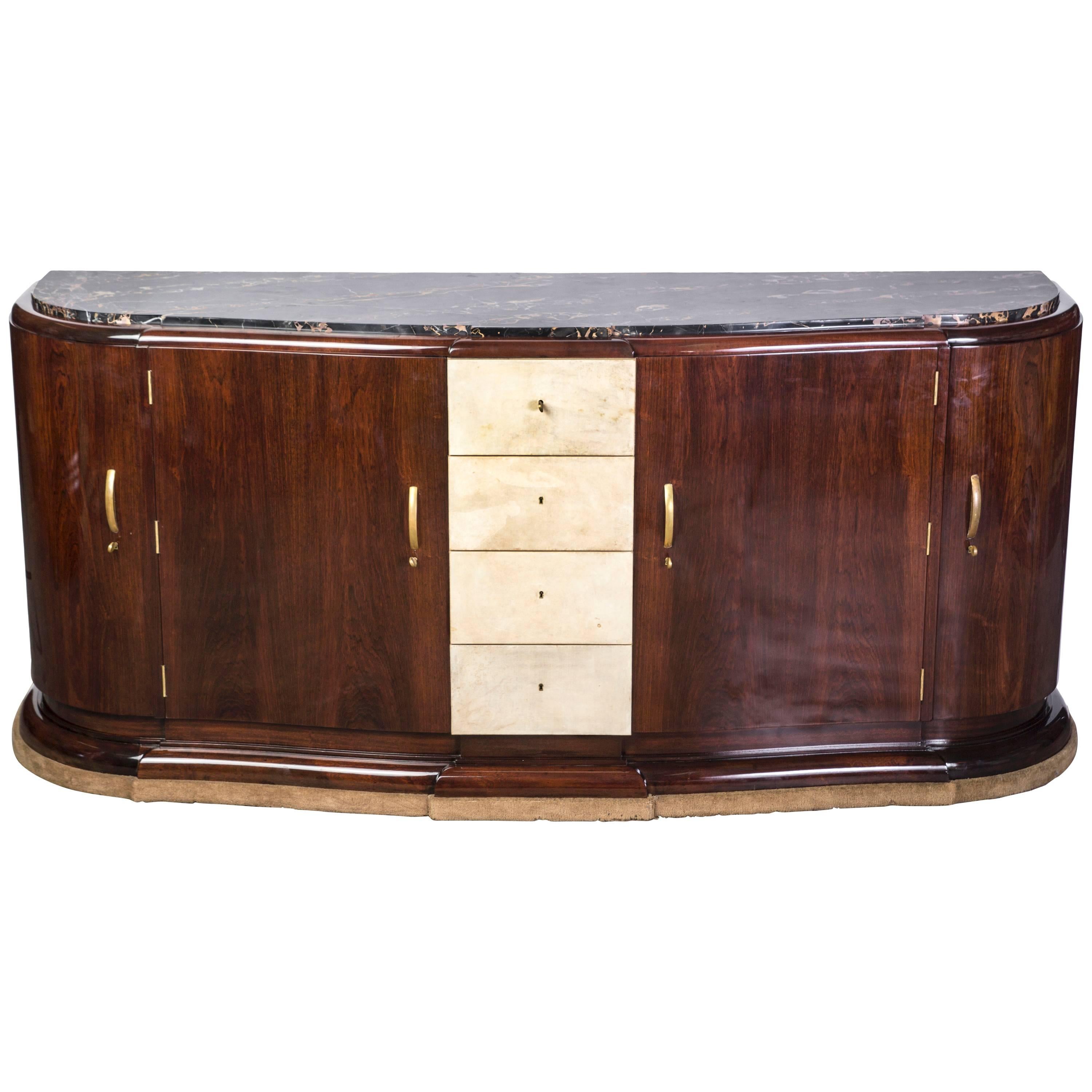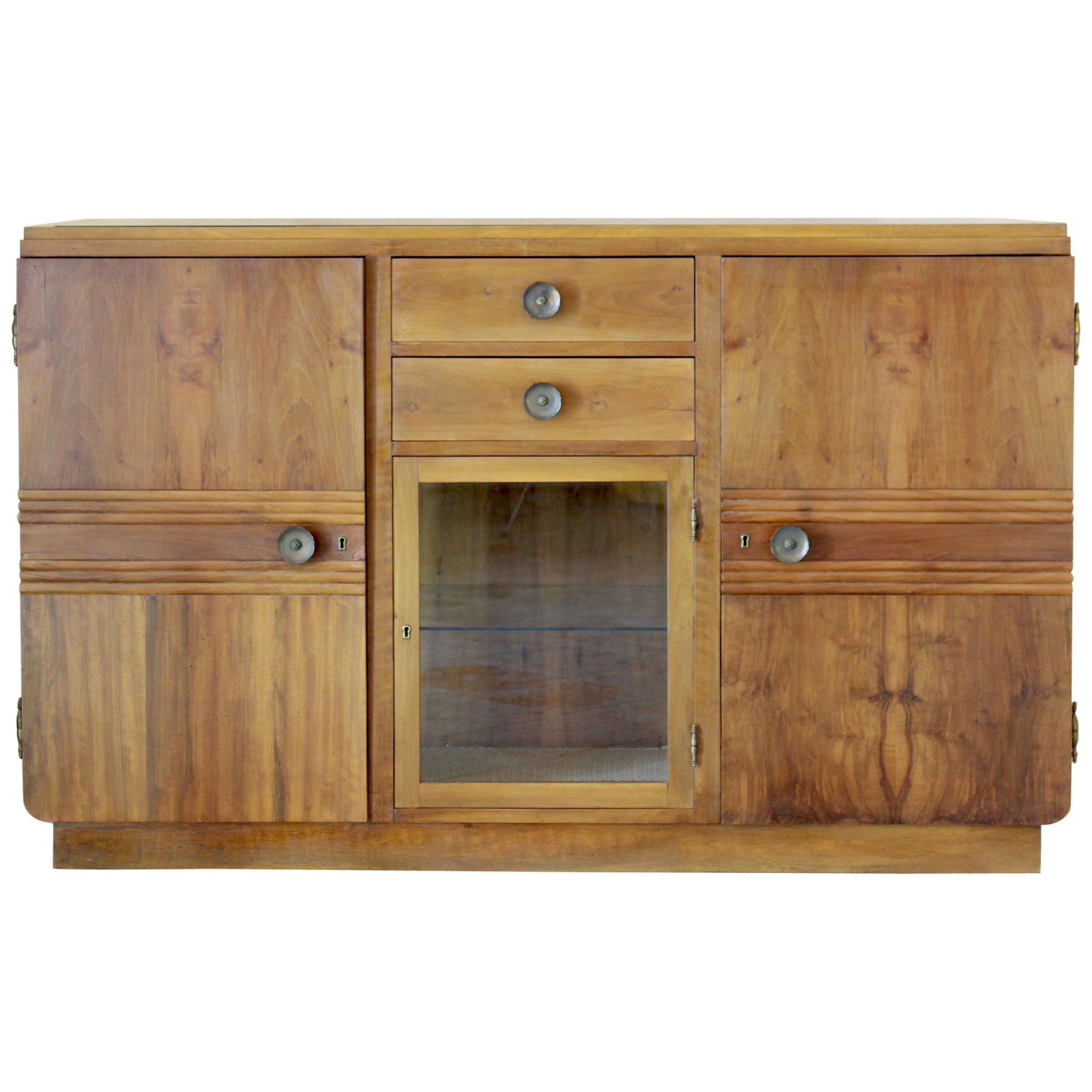Items Similar to 1930s Antique White Painted Dresser Drawers, Credenza, Art Deco Solid Oakwood
Want more images or videos?
Request additional images or videos from the seller
1 of 8
1930s Antique White Painted Dresser Drawers, Credenza, Art Deco Solid Oakwood
About the Item
Early 20th century massive antique dresser drawers, credenza, Art Deco by J. Urlich , Austria, in solid oakwood white painted.
Measures cm: H 170, W 150, D 58/33.
- Attributed to:J. Ulrich, Austria (Designer)
- Dimensions:Height: 66.93 in (170 cm)Width: 59.06 in (150 cm)Depth: 22.84 in (58 cm)
- Style:Art Deco (Of the Period)
- Materials and Techniques:
- Place of Origin:
- Period:
- Date of Manufacture:1920-1930
- Condition:Wear consistent with age and use.
- Seller Location:Vigonza, IT
- Reference Number:
About the Seller
4.9
Vetted Seller
These experienced sellers undergo a comprehensive evaluation by our team of in-house experts.
Established in 2017
1stDibs seller since 2017
283 sales on 1stDibs
Typical response time: 3 hours
- ShippingRetrieving quote...Ships From: Vigonza, Italy
- Return PolicyA return for this item may be initiated within 10 days of delivery.
More From This SellerView All
- 1930s Art Deco Burl Walnut Borsani Sideboard Buffet Server Credenza Wax PolishedBy Osvaldo BorsaniLocated in Vigonza, PaduaMidcentury Gaetano or Osvaldo Borsani Art Deco burl walnut sideboard buffet with server chest, restored and wax polished Measures cm: H 150, W...Category
Mid-20th Century Italian Art Deco Buffets
MaterialsBurl
- 1930s Italian Renaissance Credenza Buffet from Bassano Solid Walnut polishedBy Bassano's EbanisteriaLocated in Vigonza, PaduaMidcentury Italian Renaissance Bassano credenza buffet, solid walnut restored and polished to wax. Measure cm: H 92, L 100, P 47. About Bassano del Grappa Bassano del Grappa is known for the three great traditions that have made it famous: ceramics, whose productions, linked to the prestigious Antonibon family, are admirable in the Museum of ceramics at Palazzo Sturm; the typography developed between 1600 and 1800 by the Remondini family, an illustrious family of publishers and engravers of the most important Italian printing industry and the cabinet makers who produced furniture for the nearby Venice from the 16th century. The architectural context of Bassano del Grappa is a dive into art: the streets of the center are adorned by the works of authors such as Palladio, Canova, Jacopo Da Ponte...Category
Mid-20th Century Italian Renaissance Revival Buffets
MaterialsWalnut
- Italy 1930s Art Deco Credenza Display Cabinet Lacquered Hand Decorated WoodLocated in Vigonza, PaduaElegant & rare showcase Art Deco sideboard in lacquered wood and doors and tailgate decorated in faux wood hand. Acid-etched engraved sliding glass. ...Category
Mid-20th Century Italian Art Deco Credenzas
MaterialsGlass, Beech
- 19th Century Biedermeier Credenza Sideboard with Rack, Solid and Veneer WalnutLocated in Vigonza, PaduaPrecious 19th century Venetian Biedermeier sideboard, in solid walnut, and walnut briar veneer arranged in a radial pattern. Plate holder with two shelves, turned side columns and sh...Category
Antique Late 19th Century Italian Biedermeier Buffets
MaterialsWalnut, Burl
- Italian Modern Rationalist Credenza, Vittorio Dassi Attributable in RosewoodBy Vittorio DassiLocated in Vigonza, PaduaMidcentury Italian Rationalist credenza, external in rosewood with inlaid maple and interior in light wood maple. Crystal top shelf and brushed brass accessories. In excellent condit...Category
Mid-20th Century Italian Mid-Century Modern Sideboards
MaterialsBrass
- Midcentury Osvaldo Borsani attributed Credenza Buffet in Walnut and MahoganyBy Osvaldo BorsaniLocated in Vigonza, PaduaMid-Century Modern credenza buffet, in walnut lacquered and mahogany veneer with engraved sliding glass. Circa 1930. Also available without mirror Measure cm: H 85+48, W 160, D 47.Category
Mid-20th Century Italian Mid-Century Modern Buffets
MaterialsGlass, Mahogany, Walnut
You May Also Like
- French Raw Oak Art Deco Sideboard, France, 1930sBy Charles DudouytLocated in Wiesbaden, DEA large sideboard/credenza presumably by Charles Dudouyt. France, c1930s. Consists of four doors providing shelves storage compartments and two central drawers. Brass detailing ...Category
Vintage 1930s French Art Deco Buffets
MaterialsOak
- Elegant 1930s French Art Deco Sideboard Signed Maurice RinckBy RinckLocated in Kingston, NYElegant mahogany French Art Deco sideboard is signed by Maurice Rinck. It features a black Portoro marble top, parchment clad drawers in the center and rounded corner doors with bron...Category
Vintage 1930s French Art Deco Sideboards
MaterialsMarble
- Art Deco wood credenza, France 1930sLocated in Ceglie Messapica, ITArt Deco wood credenza, France 1930s. Art Deco solid walnut wood credenza with black opaline top. Internal parts are upholstered with its or...Category
Vintage 1930s French Art Deco Sideboards
MaterialsBrass
- 1930s French BuffetLocated in Dallas, TXBuffet with bronze detailing and intricate wood marquetry.Category
Vintage 1930s French Buffets
MaterialsWood
- Jules Leleu French Art Deco Credenza Sideboard or BuffetBy Jules LeleuLocated in Miami, FLA Masterful Statement Piece: Art Deco Credenza Attributed to Jules Leleu This exquisite Art Deco credenza, attributed to the renowned French designer Jules Leleu, embodies the eleg...Category
Early 20th Century French Art Deco Sideboards
MaterialsBrass
- Pier Luigi Colli Large Sideboard in Wood with Drawers Italian Manufacturer 1930sBy Pier Luigi ColliLocated in Montecatini Terme, ITLarge sideboard is entirely realized in oak wood, with four drawers on each side (for a total of eight drawers) and a central storage unit. Designed by Pier Luigi Colli Italian Manufacture from 1938 ca. To reconstruct the story of Pier Luigi Colli, we must take a leap back to the 19th century in Turin, a multifaceted city, in some ways controversial due to its austere and sometimes introverted character, but at the core of a creative drive: and if it is primarily known for its automobile industry, there was a time when Turin was at the height of fame also in the field of furniture and embroidery, thanks to the presence of two entrepreneurial realities. On the one hand there was the MIRAM (Italian Hand-Made Embroidery Manufacture) founded by Pietro Colli in 1850, specializing in gobelin fabrics and bandera embroideries. His daughter Teresa traveled between Italy and Paris to discover the latest trends in fabrics and embroidery, while her younger brother, Pier Luigi Colli (1895-1968), the star of this story, joined the company in 1921. Distinguishing himself for his enterprising personality and willing to continue his father's profession, Pier Luigi was known to his contemporaries as "the artist interior designer", and had no doubts about his future: he moved temporarily to Paris, where he attended L'Ecole des Beaux Arts Décoratives. The other great Turin manufacturer to be mentioned is Martinotti, founded in 1931 by Giuseppe Martinotti and supplier of fine furnishings for the Savoy court, pieces which were characterized by a typically 19th century eclectic style, generally made of exotic woods featuring ivory and tortoiseshell inlays: at that time, Martinotti represented the top of internationality, having even participated in the 1875 Philadelphia exhibition! The two brands' fate merged in 1902, a decisive year for Turin which, hosting the International Exhibition of Modern Decorative Art, became the cradle of the spread of the Liberty style in Italy. In the exhibition, Martinotti exhibited an elegant interior, in which all the textile parts, from the curtains to the seat upholstery, was made by Colli. It was in 1926 that Colli (MIRAM) finally acquired Martinotti, founding a laboratory where, from the savoir faire of the two companies, complete pieces of furniture were created and tailor-made for the customer, from the structure to its upholstery. Meanwhile, Pier Luigi Colli was living in Paris, the ideal place to be in 1925, when the International Exhibition of Modern Decorative and Industrial Arts brought him closer to the work of one of his putative fathers, the great French cabinet maker Jacques-Émile Ruhlmann (Paris, 1879 - 1933). Thanks to Paris, Pier Luigi intertwined contacts with the international beau monde, he started to import Lalique glass from France, while the Colli's clientele expanded and special commissions arrived, such as the creation of the Royal Train of the Savoy family made with Fiat, or the lecture hall in the University of Turin. The success of a brand is also measured by its openness to establishing collaborations with the great designers of its time, in the case of Colli resulting in important creative partnerships: from Gio Ponti, who relied on the brand for his Richard Ginori project in Rome, up to Carlo Mollino, who created with Colli the handrails of the RAI (national TV) auditorium and the windows of the Teatro Regio in Turin; also in Turin, the Morbelli architects collaborated with Colli for the furnishings of the RAI skyscraper, and the architects Gabetti Isola for the interiors of the Stock Exchange in Turin. In the 40s and 50s, having opened a branch in Rome, Colli was at the peak of productivity. The embroidery and textile section continued to be one of its strengths, keeping alive the relations with France and its great masters: among the inspirations were the geometric shapes of the fabrics of Ruhlmann's interiors, or the tactile carpets made by designer Mariod Dorn. And so, another Colli trademark become the "textured carpet...Category
Vintage 1930s Italian Mid-Century Modern Sideboards
MaterialsWood, Oak
Recently Viewed
View AllMore Ways To Browse
Antique White Paint
White Antique Paint
Antique Austrian
Antique Austria
Austrian Antique
Used Dresser Drawers
Austrian Antique Furniture
Deco White Furniture
White Art Deco Furniture
White Painted Antique
Antique White Case
White Painted Antiques Furniture
Antique White Storage
Austrian Painted
Austrian Painted Furniture
White Painted Storage
Austria Deco
Austrian Deco





